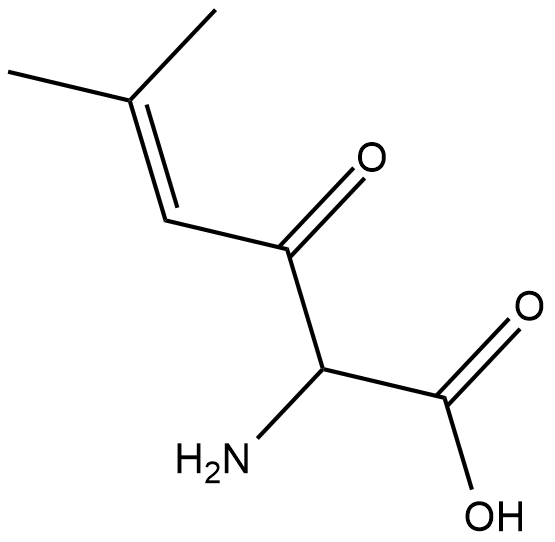Proteases
Proteases is a general term for a class of enzymes that hydrolyze protein peptide chains. According to the way they degrade polypeptides, they are divided into two categories: endopeptidases and telopeptidases. The former can cut the large molecular weight polypeptide chain from the middle to form prions and peptones with smaller molecular weights; the latter can be divided into carboxypeptidase and aminopeptidase, which respectively remove the peptide from the free carboxyl terminus or free amino terminus of the polypeptide one by one. Chain hydrolysis produces amino acids.
A general term for a class of enzymes that hydrolyze peptide bonds in proteins. According to the way they hydrolyze polypeptides, they can be divided into endopeptidases and exopeptidases. Endopeptidase cleaves the interior of the protein molecule to form smaller molecular weight peptones and peptones. Exopeptidase hydrolyzes peptide bonds one by one from the end of the free amino group or carboxyl group of protein molecules, and frees amino acids, the former is aminopeptidase and the latter is carboxypeptidase. Proteases can be classified into serine proteases, sulfhydryl proteases, metalloproteases and aspartic proteases according to their active centers and optimum pH. According to the optimum pH value of its reaction, it is divided into acidic protease, neutral protease and alkaline protease. The proteases used in industrial production are mainly endopeptidases.
Proteases are widely found in animal offal, plant stems and leaves, fruits and microorganisms. Microbial proteases are mainly produced by molds and bacteria, followed by yeast and actinomycetes.
Enzymes that catalyze the hydrolysis of proteins. There are many kinds, the important ones are pepsin, trypsin, cathepsin, papain and subtilisin. Proteases have strict selectivity for the reaction substrates they act on. A protease can only act on certain peptide bonds in protein molecules, such as the peptide bonds formed by the hydrolysis of basic amino acids catalyzed by trypsin. Proteases are widely distributed, mainly in the digestive tract of humans and animals, and are abundant in plants and microorganisms. Due to limited animal and plant resources, the industrial production of protease preparations is mainly prepared by fermentation of microorganisms such as Bacillus subtilis and Aspergillus terrestris.
Targets for Proteases
- Caspase(114)
- Aminopeptidase(24)
- ACE(74)
- Calpains(20)
- Carboxypeptidase(10)
- Cathepsin(81)
- DPP-4(31)
- Elastase(26)
- Gamma Secretase(67)
- HCV Protease(59)
- HSP(113)
- HIV Integrase(37)
- HIV Protease(47)
- MMP(228)
- NS3/4a protease(8)
- Serine Protease(18)
- Thrombin(58)
- Urokinase(4)
- Cysteine Protease(0)
- Other Proteases(18)
- Tyrosinases(47)
- 15-PGDH(1)
- Acetyl-CoA Carboxylase(13)
- Acyltransferase(59)
- Aldehyde Dehydrogenase (ALDH)(28)
- Aminoacyl-tRNA Synthetase(9)
- ATGL(1)
- Dipeptidyl Peptidase(56)
- Drug Metabolite(457)
- E1/E2/E3 Enzyme(90)
- Endogenous Metabolite(1636)
- FABP(30)
- Farnesyl Transferase(23)
- Glutaminase(14)
- Glutathione Peroxidase(14)
- Isocitrate Dehydrogenase (IDH)(28)
- Lactate Dehydrogenase(17)
- Lipoxygenase(234)
- Mitochondrial Metabolism(207)
- NEDD8-activating Enzyme(7)
- Neprilysin(12)
- PAI-1(13)
- Ser/Thr Protease(41)
- Tryptophan Hydroxylase(13)
- Xanthine Oxidase(18)
- MALT1(10)
- PCSK9(1)
Products for Proteases
- Cat.No. 상품명 정보
-
GC31611
2-Phenylpropionic acid
2-페닐프로피온산은 알파-메틸스티렌 대사의 중간체입니다.
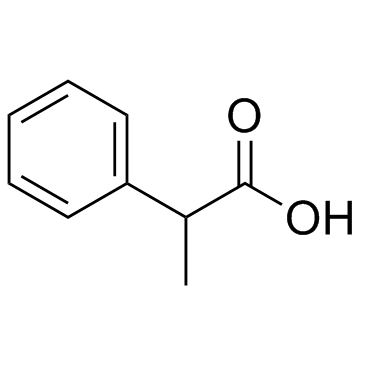
-
GC35095
2-Phospho-L-ascorbic acid trisodium salt
2-Phospho-L-ascorbic acid trisodium salt(2-Phospho-L-ascorbic acid trisodium)는 콜라겐 형성과 발현을 자극할 수 있는 오래 지속되는 비타민 C 유도체입니다.
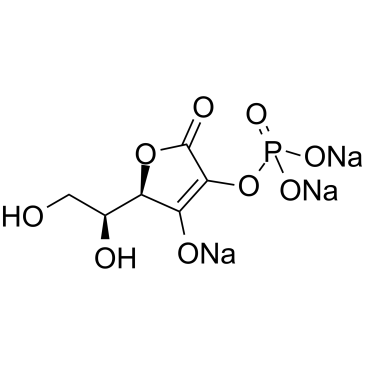
-
GC60486
2-Piperidone
2-피페리돈은 내인성 대사 산물입니다.
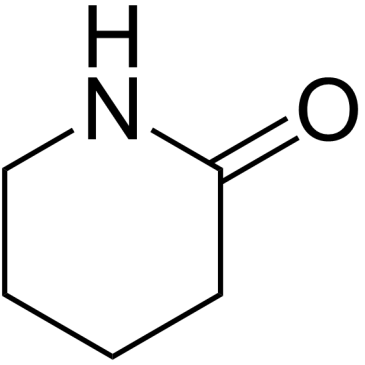
-
GC19539
2-Pyrrolidinone
2-피롤리딘원
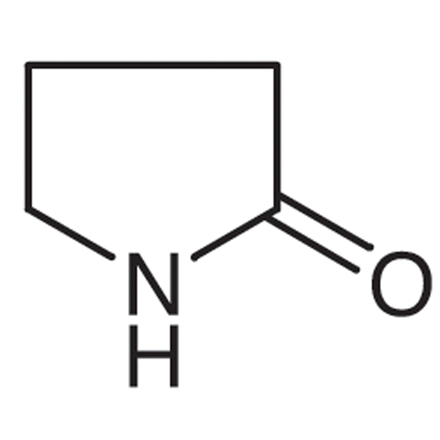
-
GC42193
2-Thenoyltrifluoroacetone
2-Thenoyltrifluoroacetone은 킬레이트제입니다.

-
GC60487
2-Thiophenecarboxaldehyde
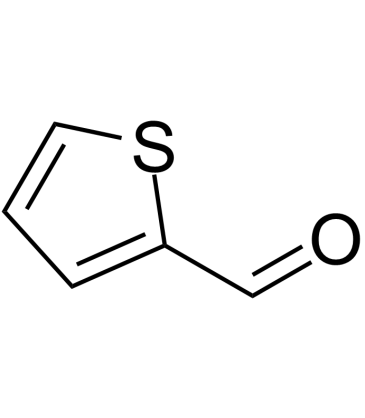
-
GC42082
20-carboxy Leukotriene B4
20-carboxy LTB4 is a metabolite of LTB4 in human neutrophils.

-
GC35075
20-HETE
MaxSpec® 정체성, 순도, 안정성 및 농도 사양을 충족시키는 양적 분석 표준
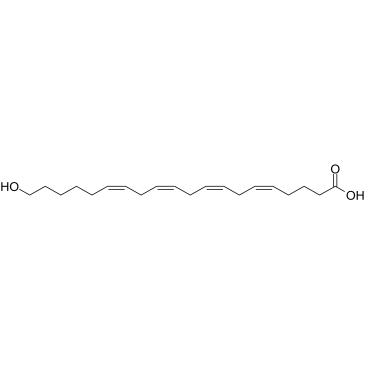
-
GC41421
20-hydroxy Leukotriene B4
20-hydroxy LTB4 is a metabolite of LTB4 in human neutrophils.

-
GC40968
21-hydroxy Eplerenone
21-hydroxy Eplerenone is a major metabolite of the mineralocorticoid receptor antagonist eplerenone.

-
GC33798
21-Hydroxypregnenolone
21-Hydroxypregnenolone은 코르티코스테론 합성의 필수 중간체입니다.
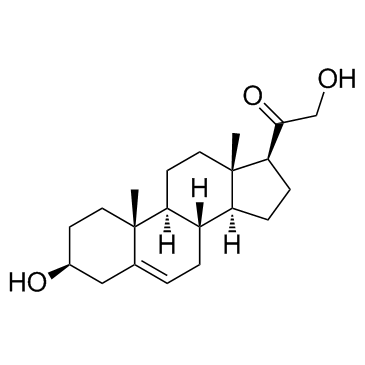
-
GC62767
23,25-Dihydroxy-24-oxovitamin D3
23,25-Dihydroxy-24-oxovitamin D3는 24(R),25-Dihydroxyvitamin D3의 주요 대사 산물입니다.
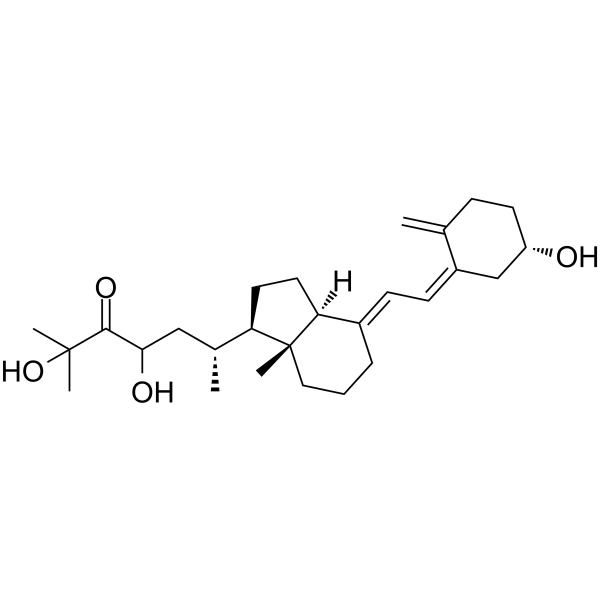
-
GC35079
24, 25-Dihydroxy VD2
24,25-Dihydroxy VD2는 비타민 D2의 수산화 대사 산물입니다. 비타민 D의 합성 유사체.
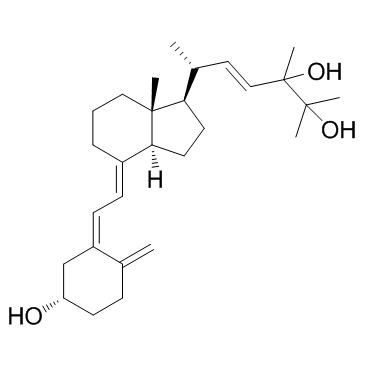
-
GC17566
24, 25-Dihydroxy VD3
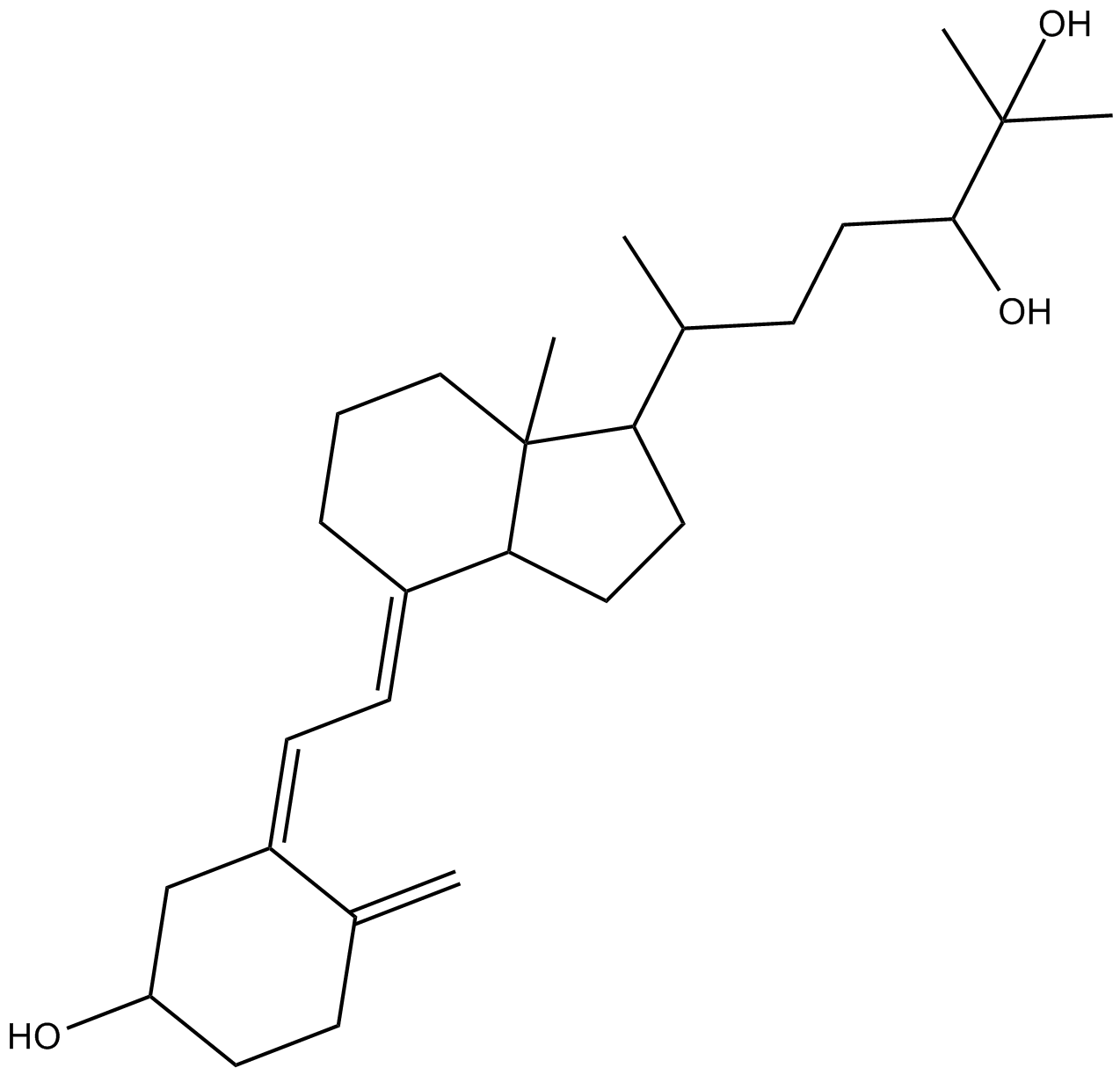
-
GC13887
25(R)-27-hydroxy Cholesterol
25(R)-27-하이드록시 콜레스테롤은 선택적 에스트로겐 수용체 조절제이자 간 X 수용체의 작용제입니다.
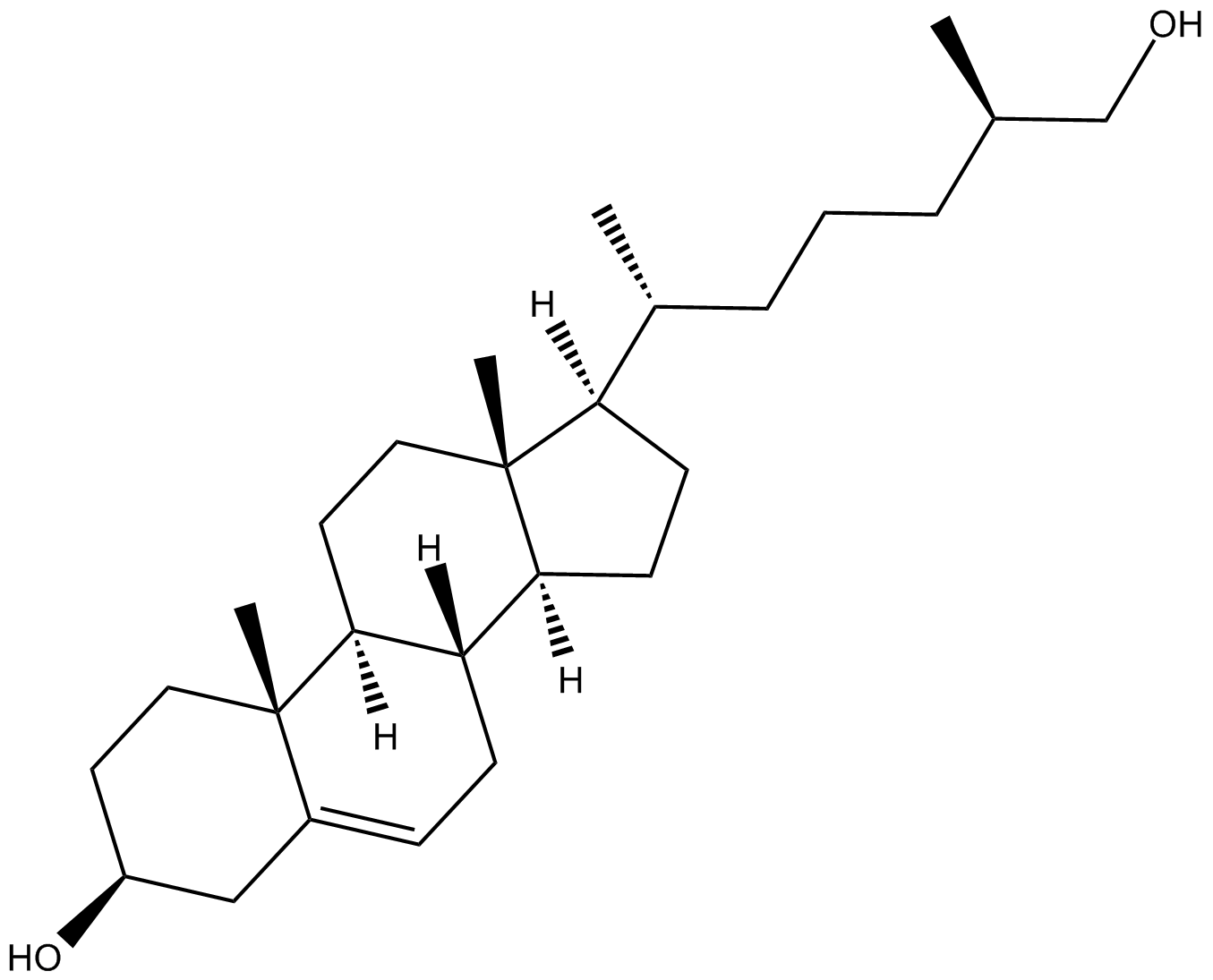
-
GC35081
25,26-Dihydroxyvitamin D3
25,26-디히드록시비타민 D3(25,26-디히드록시콜레칼시페롤)는 장내 칼슘 수송 활성을 갖는 비타민 D3의 대사 산물입니다.
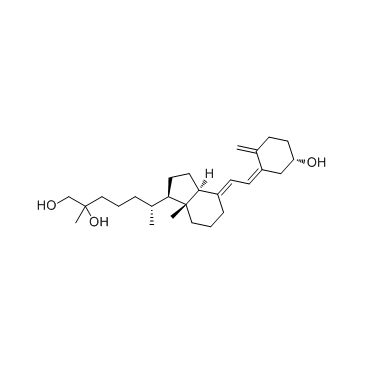
-
GC49365
25-Desacetyl Rifampicin
A major active metabolite of rifampicin

-
GC33860
25-Hydroxycholesterol
25-하이드록시콜레스테롤은 TLR(Toll-like receptor) 활성화에 대한 반응으로 대식세포에 의해 생성 및 분비되는 콜레스테롤의 대사 산물입니다.
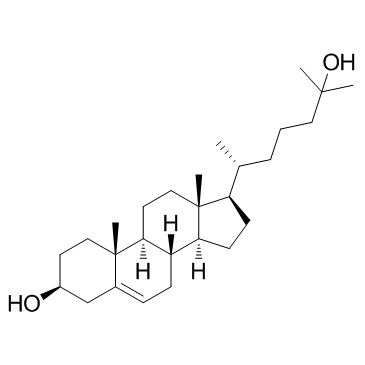
-
GC64985
3'-O-Methylguanosine
3'-O-메틸구아노신은 메틸화된 뉴클레오시드 유사체 및 RNA 사슬 종결자입니다.
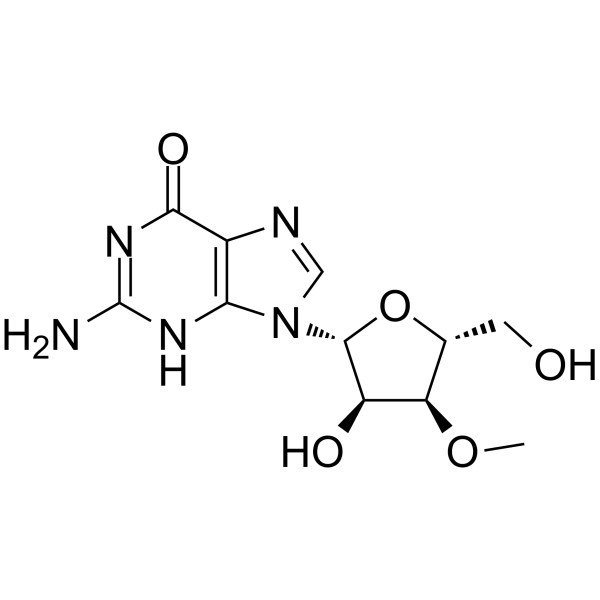
-
GC60493
3',4'-Dihydroxyacetophenone
Picea Schrenkiana Needles에서 분리된 3',4'-Dihydroxyacetophenone(3,4-DHAP)은 10μM의 IC50으로 티로시나아제 활성에 대한 강력한 억제 작용을 나타냅니다. 3',4'-디하이드록시아세토페논(3,4-DHAP)은 혈관 활성제이자 항산화제입니다.
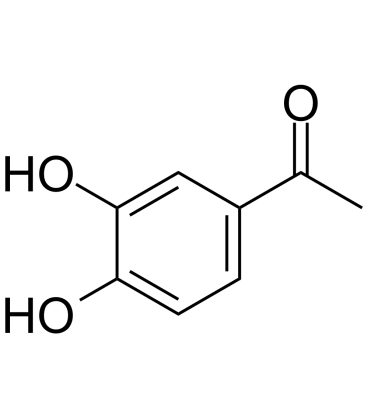
-
GC60023
3'-Deoxyuridine-5'-triphosphate
3'-Deoxyuridine-5'-triphosphate(3'-dUTP)는 DNA 의존성 RNA 중합효소 I 및 II를 억제하는 뉴클레오티드 유사체입니다.
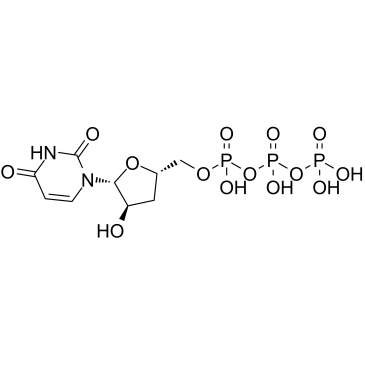
-
GC61862
3'-Deoxyuridine-5'-triphosphate trisodium
3'-Deoxyuridine-5'-triphosphate trisodium(3'-dUTP trisodium)은 DNA 의존성 RNA 중합효소 I 및 II를 억제하는 뉴클레오티드 유사체입니다.
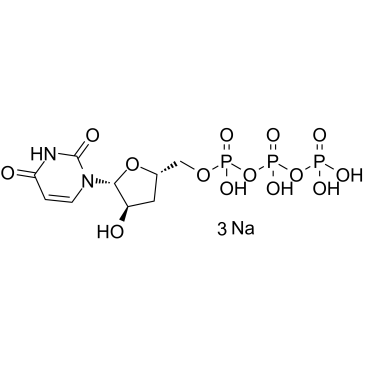
-
GC41480
3'-hydroxy Lidocaine
3'-hydroxy Lidocaine is an active metabolite of lidocaine formed by the cytochrome P450 (CYP) isoforms CYP1A2 and CYP3A4.

-
GC39611
3'-Hydroxy Repaglinide
3'-Hydroxy Repaglinide는 Repaglinide의 주요 CYP2C8 대사 산물입니다.
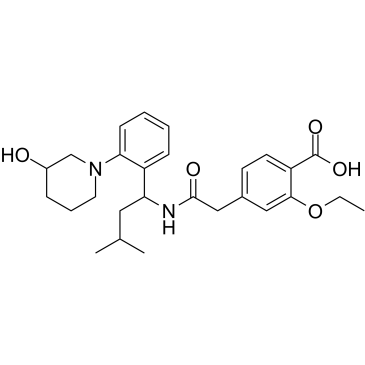
-
GC60500
3'-Hydroxy Repaglinide D5
3'-Hydroxy Repaglinide D5는 3'-Hydroxy Repaglinide로 표시된 중수소입니다.
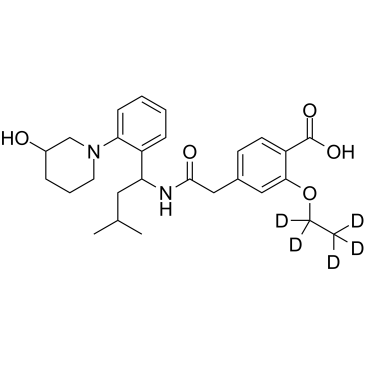
-
GC42201
3,3'-Diiodo-L-thyronine
3,3'-Diiodo-L-thyronine(3,3'-T2)은 갑상선 호르몬의 내인성 대사 산물입니다.

-
GC60491
3,3-Dimethylglutaric acid
3,3-디메틸글루타르산(3,3-Dimethylglutaric acid)은 메틸 분지 지방산(methyl-branched fatty acid)의 구성원으로 인간의 소변에서 가끔 발견되는 내인성 대사 산물입니다.
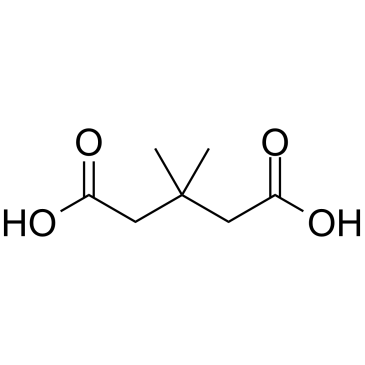
-
GC33703
3,4,5-Trimethoxycinnamic acid
3,4,5-Trimethoxycinnamic acid는 Polygala tenuifoliaWILLD의 뿌리에서 분리된 페닐프로파노이드로 항스트레스 효과가 있어 동물의 수면 시간을 연장시킵니다.
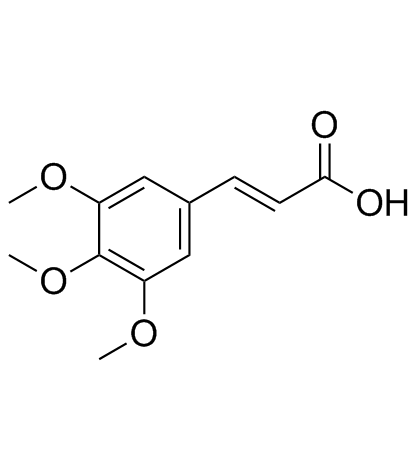
-
GC68082
3,4,5-Trimethoxyphenylacetic acid

-
GC39841
3,4-Dehydro Cilostazol
3,4-Dehydro Cilostazol(OPC-13015)은 Cilostazol의 활성 대사 산물입니다.
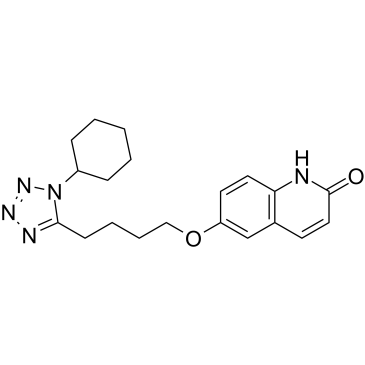
-
GC33649
3,4-Dihydroxybenzeneacetic acid
3,4-디히드록시벤젠아세트산은 도파민의 주요 신경 대사 산물입니다.
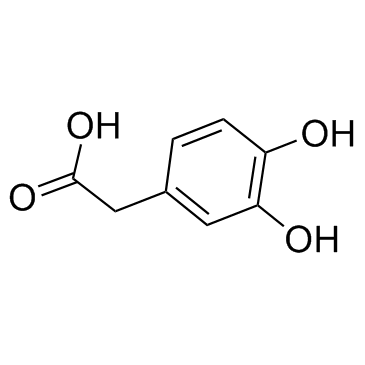
-
GC30146
3,4-Dihydroxymandelic acid
3,4-디히드록시만델산은 노르에피네프린의 대사산물입니다.
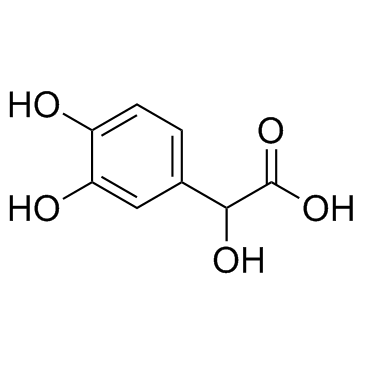
-
GC39777
3,4-Dimethoxyphenethylamine
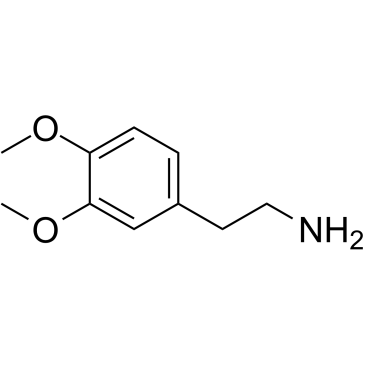
-
GC39327
3,4-Dimethoxyphenol
3,4-디메톡시페놀은 식물 유래 페닐프로파노이드 화합물로 화장품의 미백제로 사용할 수 있습니다.
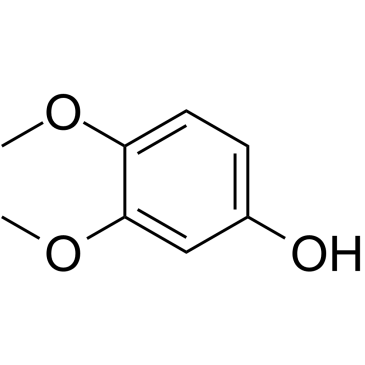
-
GC33615
3,4-Dimethoxyphenylacetic acid
3,4-디메톡시페닐아세트산은 화학 합성의 빌딩 블록입니다.
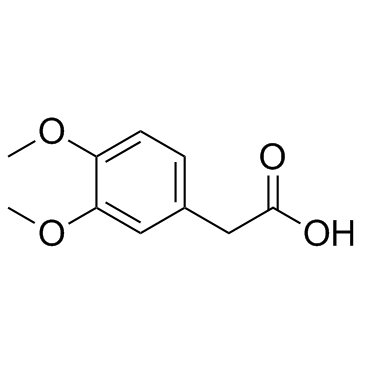
-
GC60497
3,5-Dihydroxyacetophenone
3,5-Dihydroxyacetophenone은 내인성 대사 산물입니다.
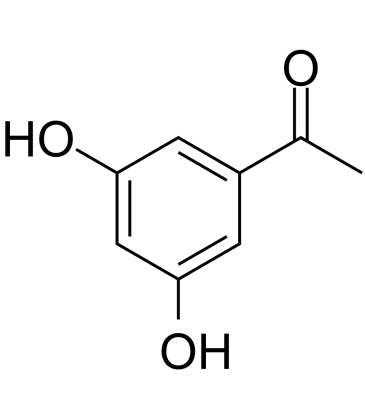
-
GC33817
3,5-Dihydroxybenzoic acid
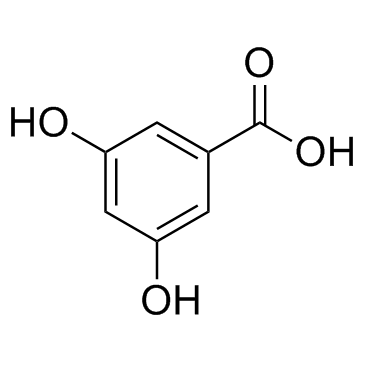
-
GC61716
3,5-Dimethylbenzaldehyde
3,5-디메틸벤즈알데히드는 화학 합성의 빌딩 블록입니다.
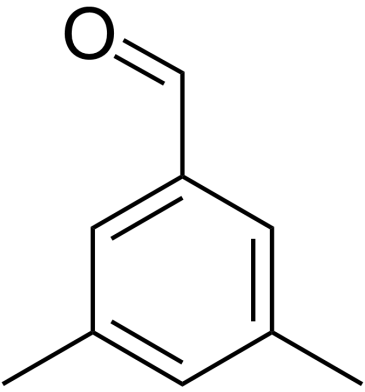
-
GC62788
3-(2,4-Dihydroxyphenyl)propanoic acid
3-(2,4-Dihydroxyphenyl)propanoic acid(DPPacid)는 강력하고 경쟁력 있는 티로시나제 억제제이며 IC50과 DL-DOPA를 각각 3.02μM 및 11.5μM의 IC50으로 억제합니다.
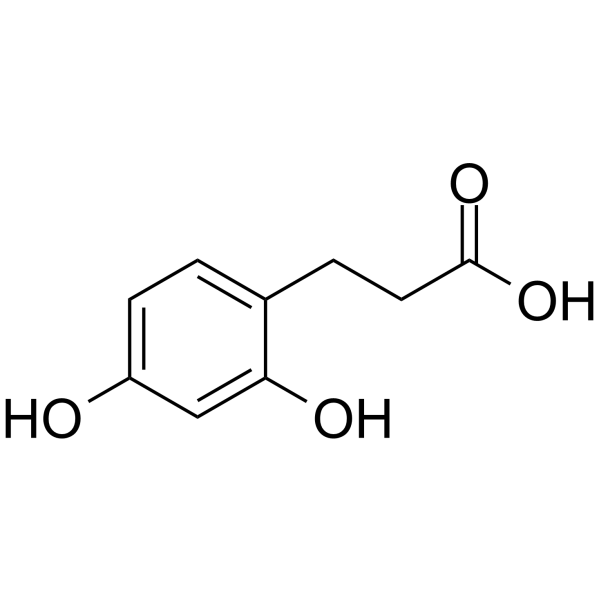
-
GC62789
3-(2-Hydroxyphenyl)propanoic acid
3-(2-Hydroxyphenyl)propanoic acid는 내인성 대사 산물입니다.
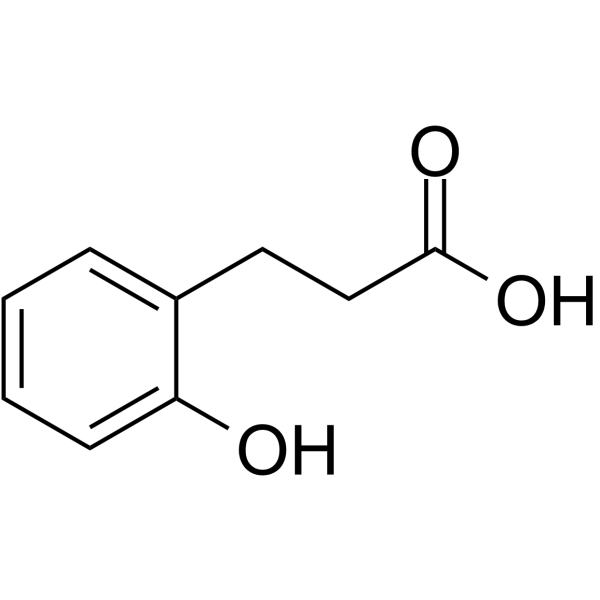
-
GC33618
3-(3,4,5-Trimethoxyphenyl)propanoic acid
3-(3,4,5-Trimethoxyphenyl)propanoic acid는 허브와 향신료에서 발견됩니다.
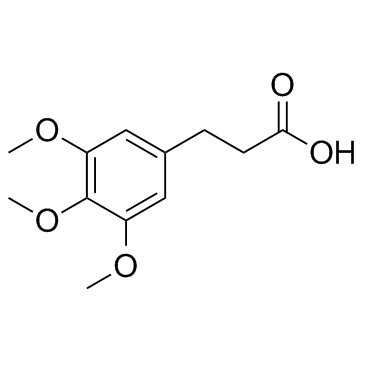
-
GC60488
3-(3-Hydroxyphenyl)propionic acid
3-(3-Hydroxyphenyl)프로피온산은 인간 미생물총에 의해 형성된 플라보노이드 대사 산물입니다.
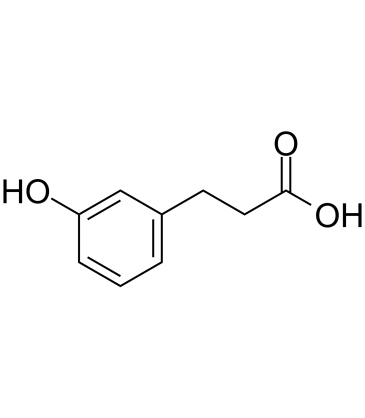
-
GC52324
3-(3-Hydroxyphenyl)propionic Acid sulfate
A metabolite of certain phenols and glycosides

-
GC31625
3-(3-Methoxyphenyl)propionic acid
3-(3-메톡시페닐)프로피온산은 자연적으로 발생하는 인간의 대사산물이며 인간의 소변으로 배설되는 유기산입니다.
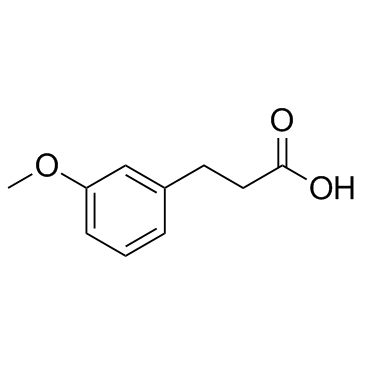
-
GC42198
3-(4-Chlorophenyl)-4-hydroxybutyric Acid (sodium salt)
An inactive metabolite of baclofen
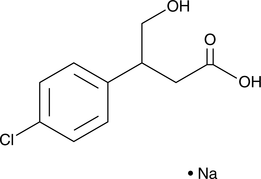
-
GC32943
3-(Methylthio)propionic acid (3-Methylsulfanylpropionic acid)
3-(메틸티오)프로피온산(3-메틸설파닐프로피온산)은 메티오닌 대사의 중간체입니다.
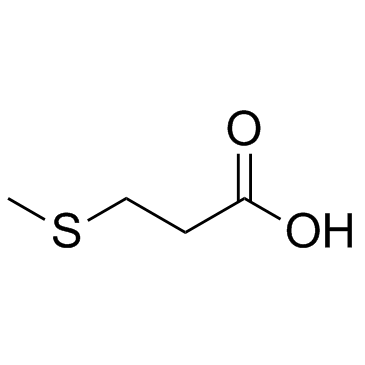
-
GC46583
3-Amino-2,6-Piperidinedione
An active metabolite of (±)-thalidomide

-
GC31569
3-Amino-2-methylpropanoic acid
3-Amino-2-methylpropanoic acid는 백색지방의 갈변 및 간의 β-산화를 유발할 수 있으며 심장 대사 위험 인자와 반비례합니다.
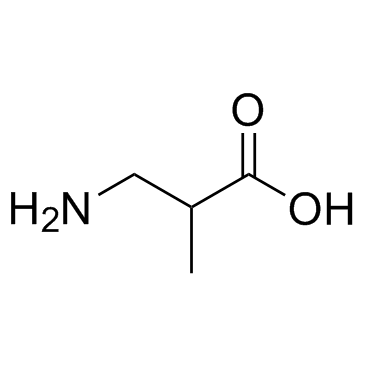
-
GC62793
3-Amino-2-oxazolidinone
3-아미노-2-옥사졸리디논(AOZ)은 푸라졸리돈의 대사 산물입니다.
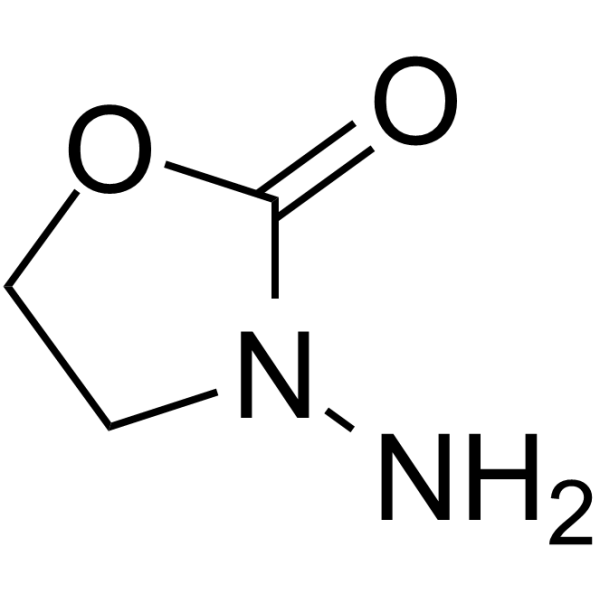
-
GC67902
3-Amino-2-oxazolidinone-d4

-
GC39688
3-Amino-2-piperidinone
3-아미노피페리딘-2-온은 모든 살아있는 유기체의 대사 산물입니다.
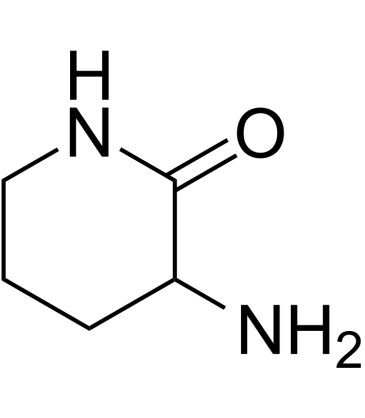
-
GC38293
3-Amino-4-hydroxybenzoic acid
3-아미노-4-하이드록시벤조산은 내인성 대사산물입니다.
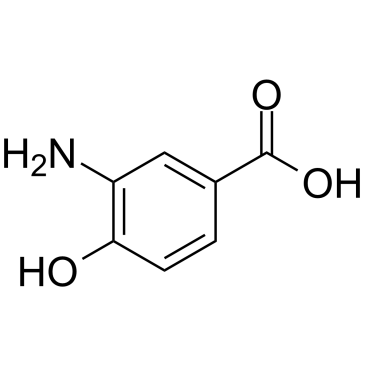
-
GC30719
3-Amino-4-methylpentanoic acid
3-아미노-4-메틸펜탄산은 류신 2,3-아미노뮤타제 효소에 의한 L-류신의 대사를 통해 인간에서 자연적으로 생성되는 L-류신의 베타 아미노산 및 위치 이성질체입니다.
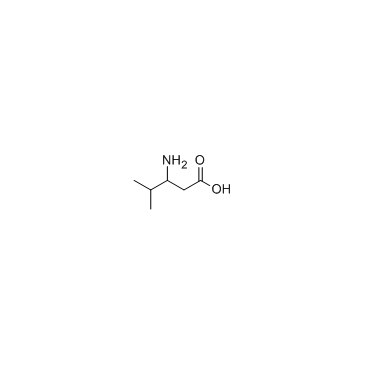
-
GC49849
3-Aminosalicylic Acid
A salicylic acid derivative

-
GC33631
3-Chloro-L-tyrosine
3-Chloro-L-tyrosine은 myeloperoxidase-catalyzed oxidation의 특이적 표지자로 인간의 죽상경화성 내막에서 분리된 저밀도 지단백질에서 현저하게 증가합니다.
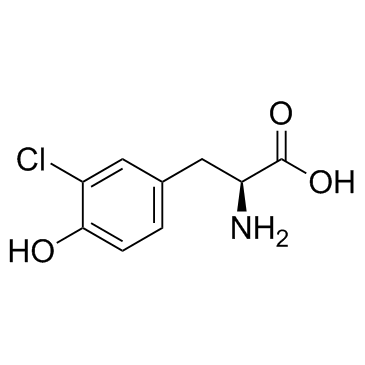
-
GC35106
3-Dehydrotrametenolic acid
Poria cocos의 공막에서 분리된 3-디하이드로트라메테놀산은 젖산 탈수소효소(LDH) 억제제입니다. 3-디하이드로트라메테놀산은 시험관 내에서 지방세포 분화를 촉진하고 생체 내에서 인슐린 감작제로 작용합니다. 3-디히드로트라메테놀산은 세포자살을 유도하고 항암 활성이 있습니다.
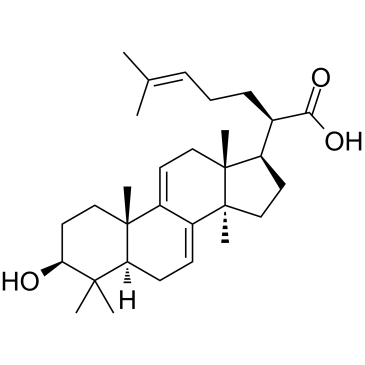
-
GC40743
3-deoxy Galactosone
3-데옥시 갈락토손은 갈락토오스의 분해에서 유래하는 1,2-디카르보닐 화합물입니다.

-
GC35111
3-Epiursolic Acid
3-Epiursolic Acid는 Myrtaceae에서 분리할 수 있는 triterpenoid이며 cathepsin B에 뚜렷한 영향 없이 카텝신 L(IC50, 6.5μM; Ki, 19.5μM)의 경쟁적 억제제로 작용합니다.
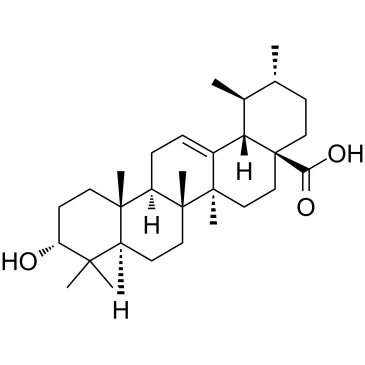
-
GC38257
3-Ethoxy-3-oxopropanoic acid
3-Ethoxy-3-oxopropanoic acid는 내인성 대사 산물입니다.
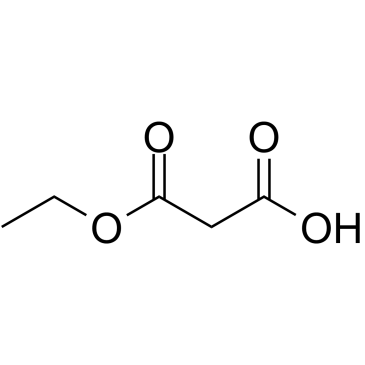
-
GC38368
3-Furanoic acid
3-Furanoic acid는 내인성 대사 산물입니다.
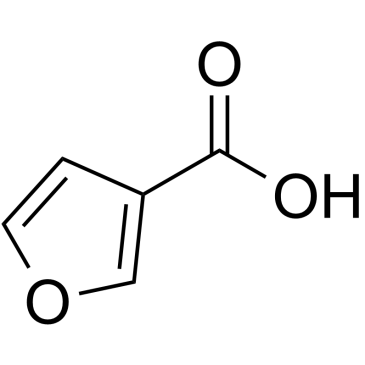
-
GC13377
3-hydroxy Anthranilic Acid
3-하이드록시 안트라닐산은 키누레닌 경로의 트립토판 대사 산물입니다.
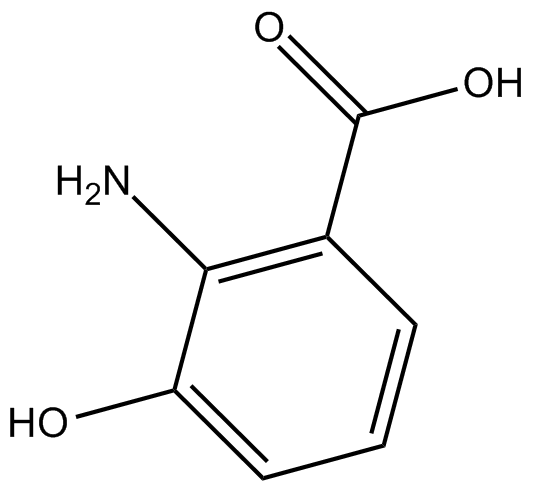
-
GC42274
3-hydroxy Darifenacin
3-hydroxy Darifenacin is a metabolite of darifenacin.

-
GC42275
3-hydroxy Desloratidine
3-hydroxy Desloratidine is a major metabolite of desloratadine , a tricyclic antagonist of the histamine H1 receptor.

-
GC41565
3-hydroxy Medetomidine
3-hydroxy Medetomidine is a metabolite of the α2-adrenergic receptor agonist medetomidine.

-
GC60501
3-Hydroxy-4-aminopyridine
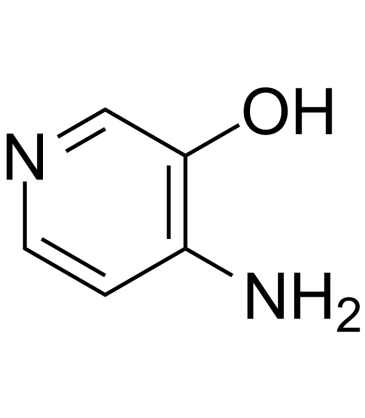
-
GC39328
3-Hydroxybenzaldehyde
3-Hydroxybenzaldehyde는 Protocatechualdehyde와 같은 페놀 화합물의 전구체 화합물입니다.
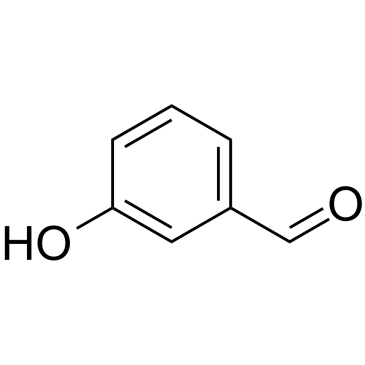
-
GC38669
3-Hydroxybenzoic acid
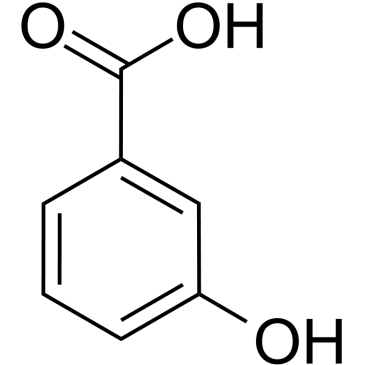
-
GC30616
3-Hydroxybutyric acid
3-하이드록시부티르산(β-하이드록시부티르산)은 제1형 당뇨병에서 증가되는 대사 산물입니다.
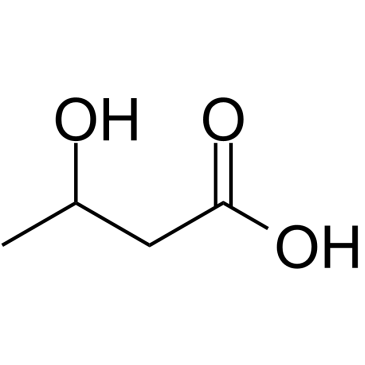
-
GC60502
3-Hydroxybutyric acid sodium
3-하이드록시부티르산 나트륨(β-하이드록시부티르산 나트륨)은 I형 당뇨병에서 증가되는 대사 산물입니다.
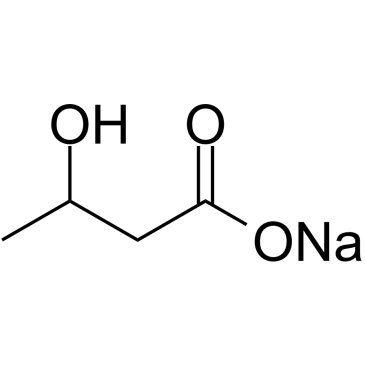
-
GC33383
3-Hydroxycapric acid
3-Hydroxycapric acid는 유사분열 진행의 억제제입니다.
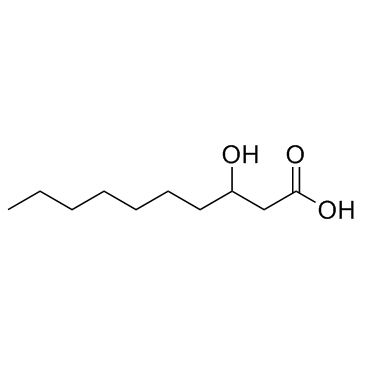
-
GC49364
3-Hydroxycoumarin
3-하이드록시쿠마린은 인간 15-LOX-1의 강력한 산화환원 억제제입니다.

-
GC30642
3-Hydroxydodecanoic acid
3-하이드록시도데칸산은 지방산 대사 장애와 관련된 중쇄 지방산입니다.
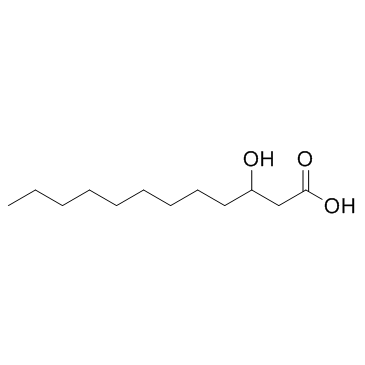
-
GC41477
3-Hydroxyglutaric Acid
3-하이드록시글루타르산은 글루타르산 유도체입니다.

-
GC66424
3-Hydroxyglutaric acid-d5
3-하이드록시글루타르산-d5는 3-하이드록시글루타르산으로 표지된 중수소입니다. 821d96072c2d58d8970e76f526b0f6b83-하이드록시글루타르산은 글루타르산 유도체입니다.821d96072c2d58d8970e76f526b0f6b8
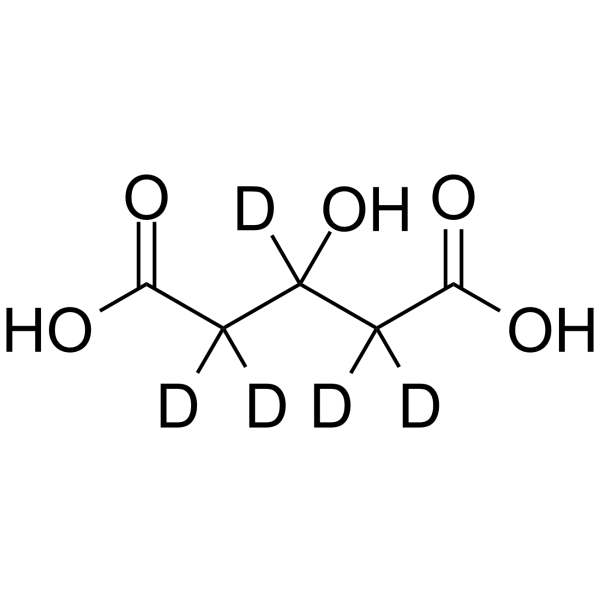
-
GC30603
3-Hydroxyhippuric acid
3-Hydroxyhippuric acid는 아실 글리신입니다.
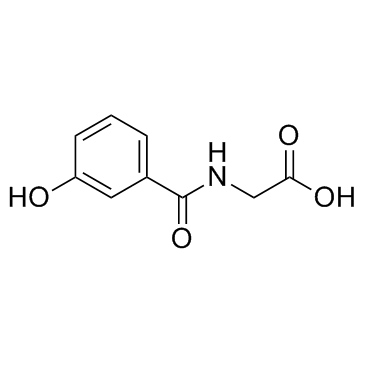
-
GC30660
3-Hydroxyisovaleric acid
3-Hydroxyisovaleric acid는 소변으로 배출되는 정상적인 내인성 대사 산물입니다.
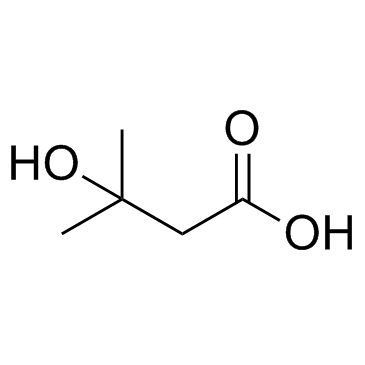
-
GC30638
3-Hydroxymandelic Acid
3-Hydroxymandelic Acid, Phenylephrine의 대사 산물인 Phenylephrine은 α-수용체 작용제입니다.
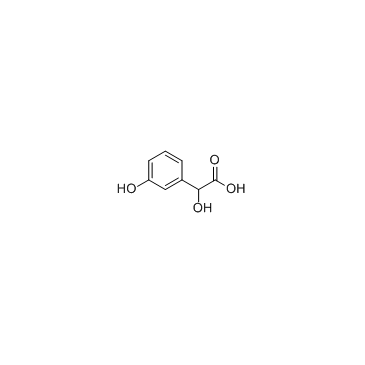
-
GC38269
3-Hydroxyphenylacetic acid
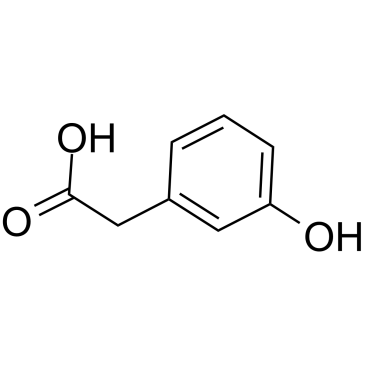
-
GC14549
3-Hydroxyphenylacetic acid
3-Hydroxyphenylacetic acid는 내인성 대사 산물입니다.
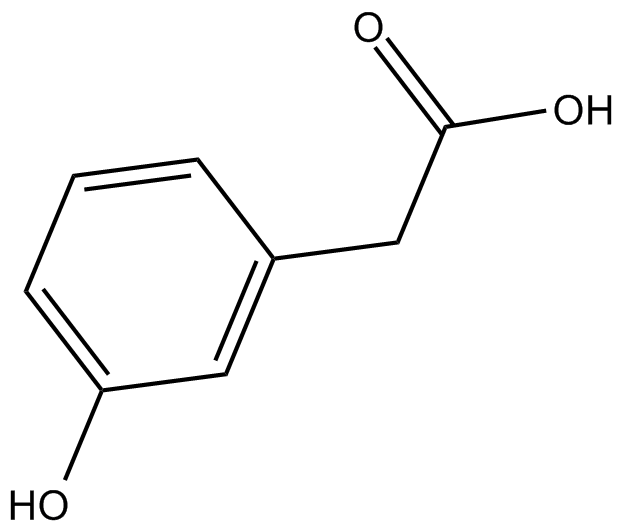
-
GC30636
3-Hydroxypicolinic acid (Picolinic acid, 3-hydroxy- (6CI,7CI,8CI))
3-하이드록시피콜린산(피콜린산, 3-하이드록시-(6CI,7CI,8CI))은 피콜린산 유도체이며 피리딘 계열에 속합니다.
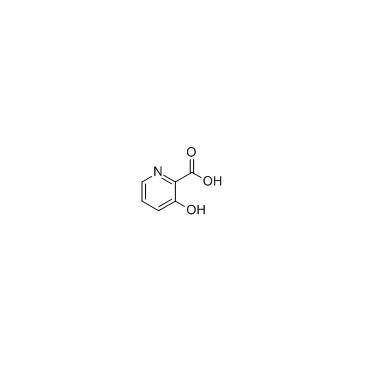
-
GC30729
3-Hydroxyvaleric acid
3-하이드록시발레르산은 5-탄소 케톤체입니다.
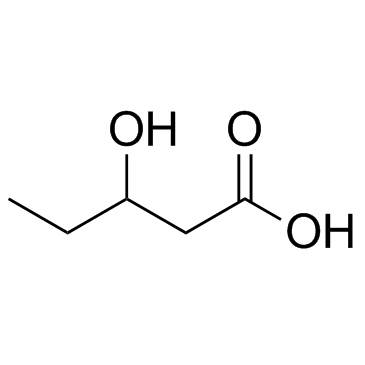
-
GC33436
3-Indoleacetic acid (Indole-3-acetic acid)
3-인돌아세트산(인돌-3-아세트산)(인돌-3-아세트산)은 옥신 계열의 가장 흔한 천연 식물 성장 호르몬입니다.
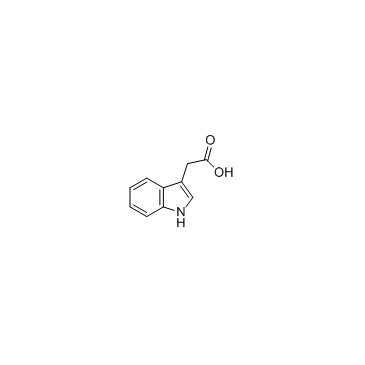
-
GC39778
3-Indoleacetonitrile
3-인돌아세토니트릴은 내인성 대사 산물입니다.
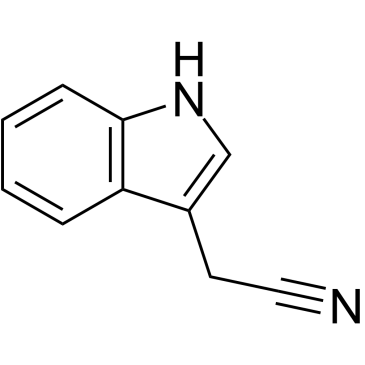
-
GC31290
3-Indolepropionic acid
3-인돌프로피온산은 강력한 항산화제로 알려져 있으며 알츠하이머병 치료에 잠재력이 있습니다.
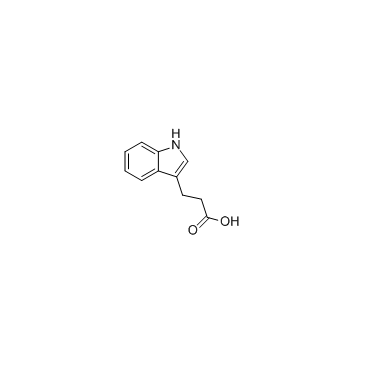
-
GC48457
3-keto Fusidic Acid
An active metabolite of fusidic acid

-
GC33653
3-Methoxybenzoic acid (3-Anisic acid)
3-메톡시벤조산(3-아니신산)은 유로퓸(III)과 가돌리늄(III)의 3-메톡시벤조에이트 합성에 사용할 수 있습니다.
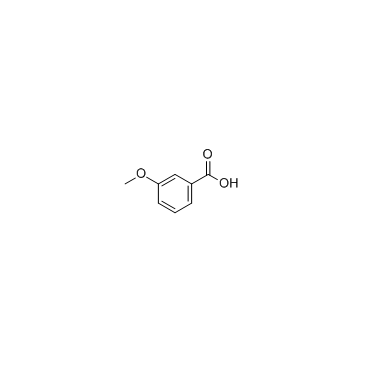
-
GC33739
3-Methoxytyramine (3-O-methyl Dopamine)
3-하이드록시티라민/도파민의 잘 알려진 세포외 대사산물인 3-메톡시티라민(3-O-메틸 도파민)은 신경 조절제입니다.
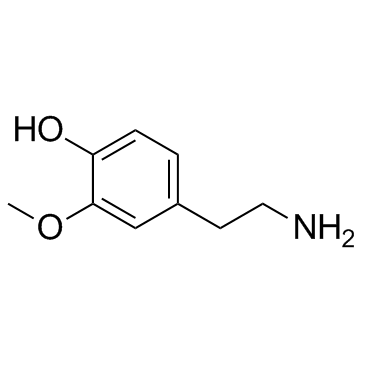
-
GC33738
3-Methoxytyramine hydrochloride (3-O-methyl Dopamine hydrochloride)
3-메톡시티라민 염산염(3-O-메틸 도파민 염산염)은 미량 아민 관련 수용체 1(TAAR1)을 활성화할 수 있는 도파민의 비활성 대사 산물입니다.
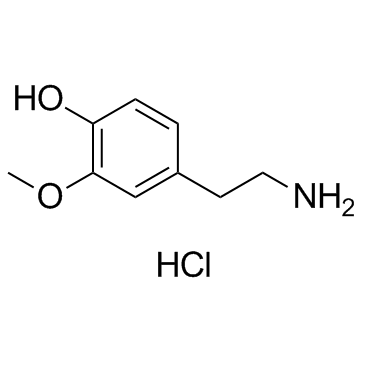
-
GC68324
3-Methoxytyramine-d4 hydrochloride

-
GC49869
3-Methoxytyrosine
An active metabolite of L-DOPA

-
GC39690
3-Methyl-2-buten-1-ol
3-메틸-2-부텐-1-올은 내인성 대사 산물입니다.
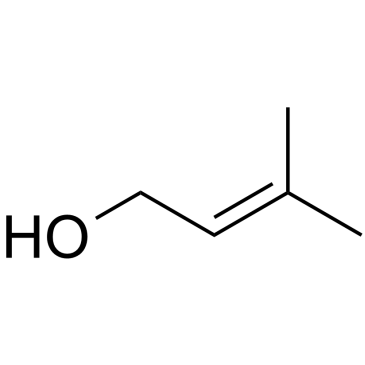
-
GC39846
3-Methyl-2-cyclopenten-1-one
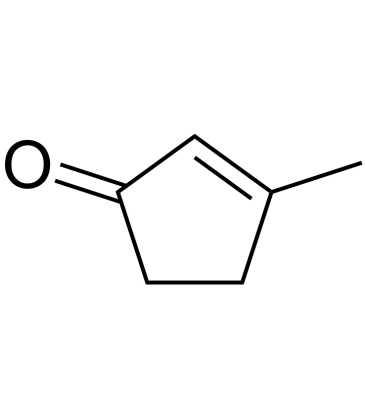
-
GC19716
3-methyl-2-oxobutyrate
3-메틸-2-옥소부티레이트는 대장균에서 판토텐산의 전구체입니다.
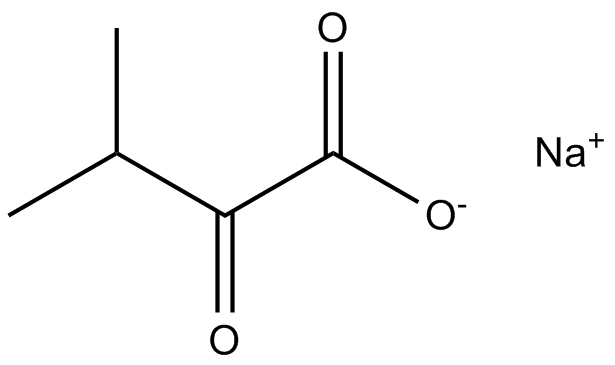
-
GC30593
3-Methyl-2-oxovaleric acid
3-Methyl-2-oxovaleric acid는 신경독, 산생성물질, 대사독소이며, 또한 분지쇄 아미노산의 불완전한 분해에서 발생하는 비정상적인 대사산물이다.
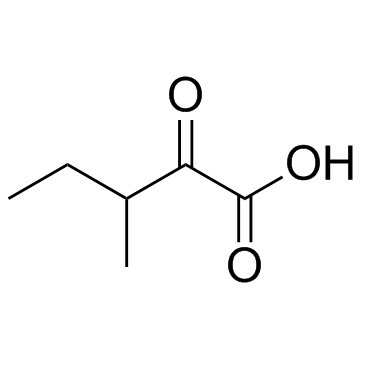
-
GC31535
3-Methyl-L-histidine
3-메틸-L-히스티딘은 육류 소비, 특히 닭고기에 대한 바이오마커입니다.
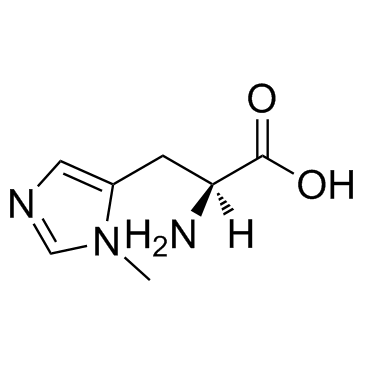
-
GC10710
3-Methyladenine
3-메틸아데닌은 고전적인 자가포식 억제제입니다.
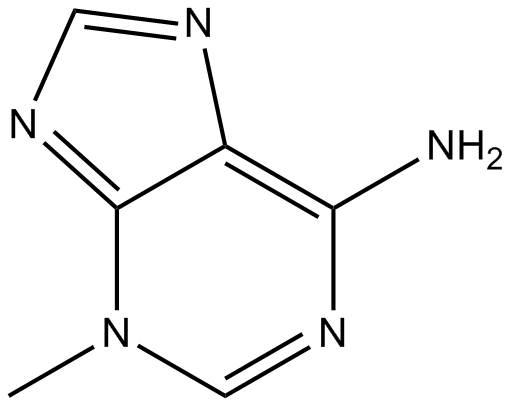
-
GC31546
3-Methyladipic acid
3-메틸아디프산은 ω-산화 경로의 최종 대사산물입니다.
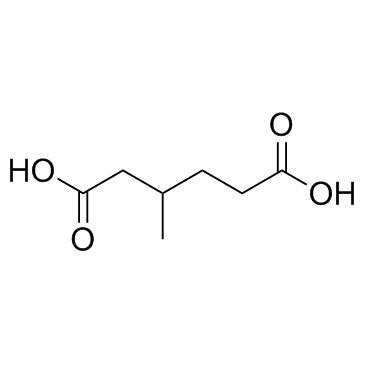
-
GC38360
3-Methylbut-2-enoic acid
3-Methylbut-2-enoic acid는 내인성 대사 산물입니다.
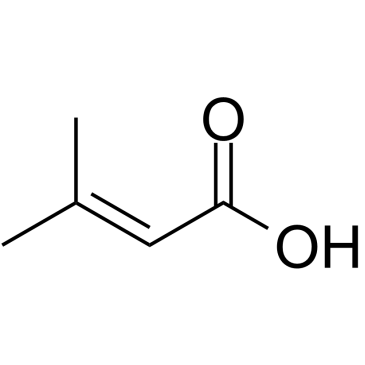
-
GC31595
3-Methylbutanoic acid
3-Methylbutanoic acid는 천연 지방산이며 인간의 신생아 사망 및 자메이카 구토병에 영향을 미치는 것으로 알려져 있습니다.
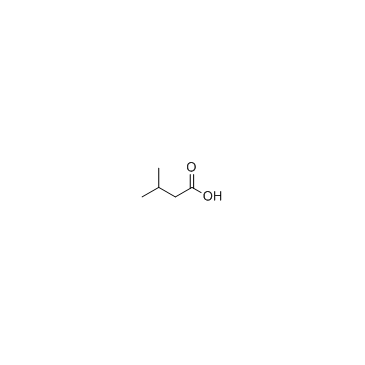
-
GC18628
3-Methylcrotonyl Glycine
3-Methylcrotonyl Glycine은 소변에서 발견되는 정상적인 아미노산 대사 산물인 아실 글리신입니다.
